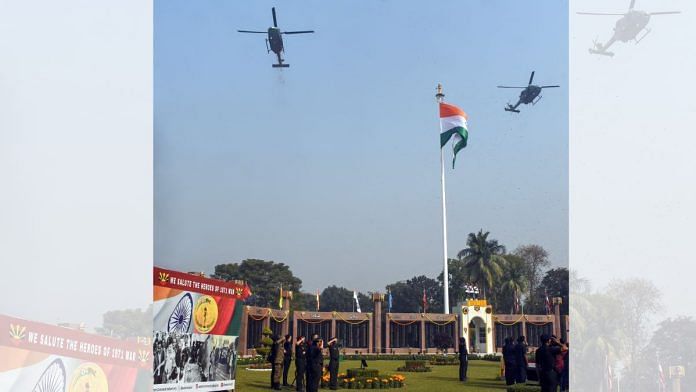New Delhi: The Indian Army changed the name of the Eastern Command headquarters, located in West Bengal, from Fort William to Vijay Durg mid-December last year in a bid to shed off the “colonial legacy”. The name was taken from the Vijaydurg Fort on Maharashtra’s Sindhudurg coast, a naval base of the Maratha Empire.
Sources in the defence establishment said that it was an internal change and that no formal announcement has been made yet. The Army officers added that it was also not deliberately kept hidden in any way. Locally, this change was known, one Army officer told ThePrint.
“The intention behind the change of name was taken on the lines of the armed forces’ decision to shed colonial legacy and move towards Indianisation of the forces,” the source said.
The oldest fort on the coast, located on on the bank of the River Vaghotan, the Vijaydurg Fort was constructed during the regime of Raja Bhoja II of the Shilahar dynasty. It was fortified by Chhatrapati Shivaji.
According to ‘Naval Resistance to Britain’s Growing Power in India, 1660–1800’ by historian Philip MacDougall, it was known for its impregnability. The fort also gave an edge to the Maratha Navy because its warships could remain hidden from sea, dodging enemy attention.
Eastern Command faced Chinese aggression in 1962
Located on the eastern banks of the River Hooghly, Fort William was was build by the British East Indian Company in 1696 CE. It was used to defend the Company’s trading interests in India and safeguard it from the local rulers and other competing European powers.
It was named named after King William III in 1700 CE. Subsequently, its president and governor-general, Sir Charles Eyre, built the south-eastern bastion of the fort and adjacent walls.
The north-eastern bastion was added by his successor—John Beard—in 1702 CE.
The entirety of the construction ended in 1716, according to the Government of India website. The city of Kolkata is said to have evolved around Fort William.
The Indian Army’s current-day Eastern Command, headquartered in Kolkata, covers several states, including Sikkim, Arunachal Pradesh, Nagaland, Manipur, Mizoram, Tripura, Meghalaya, Assam, and West Bengal. The command was first formed in 1920. The Army’s III Corps, IV Corps, XVII Corps and XXXIII Corps come under this command.
The formations and units under the command faced the Chinese aggression in 1962 and also participated in the 1971 Indo-Pakistan War, also known as the Bangladesh Liberation War.
Also Read: Defence Secretary spells out big procurement push, overhaul of system






